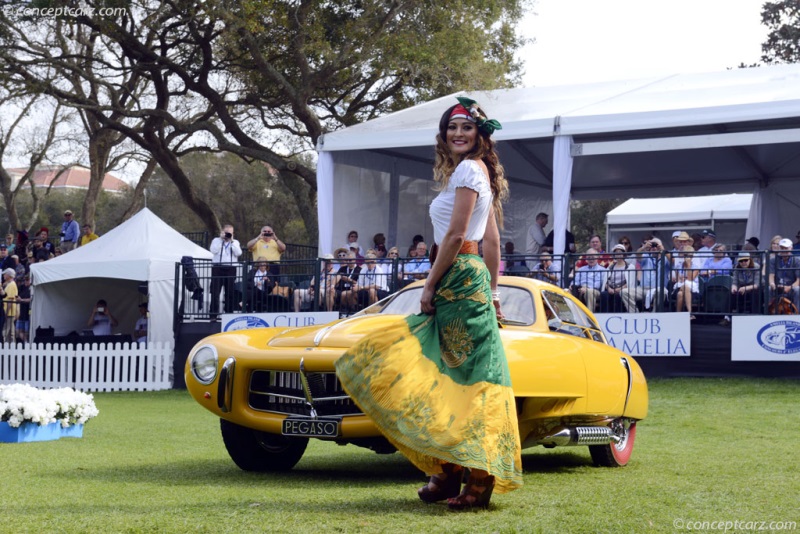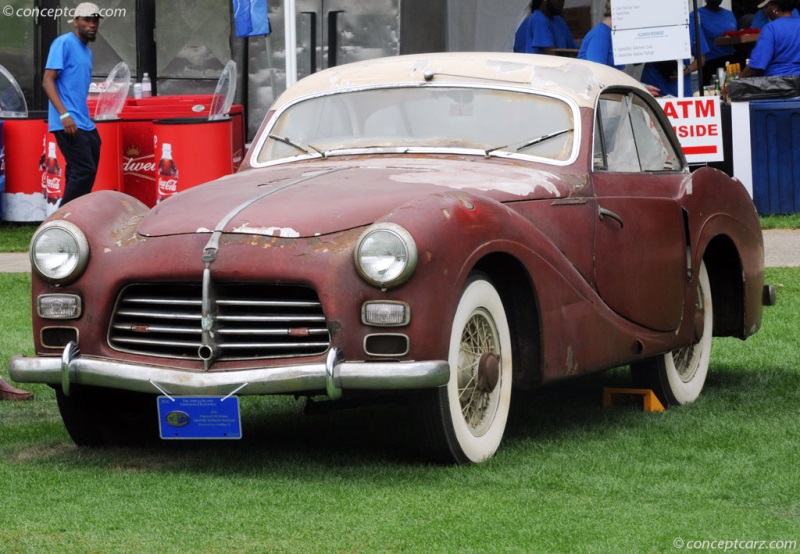During the 1940s, the government of Spain created the Empresa Nacional de Autocamiones S.A. (ENASA) in hopes of improving transportation after a destructive civil war. It was to focus on building trucks and buses under the Pegaso marque, named after Pegasus, the mythical winged horse. Led by Wifredo Ricart, Pegaso initially struggled as they wrestled with material shortages and a morally devastated workforce. Under Ricart's leadership, a brilliant engineer and a seasoned automotive veteran, Pegaso began to prosper and soon ventured into producing high-performance Gran Turismo cars. The base of operation was in the old Hispano-Suiza factory.
Berlinetta by Saoutchik
Chassis #: 117
View info and historyENASA
ENASA was incorporated in 1946 after acquiring the automotive assets of the Spanish Hispano-Suiza and the Italian Fiat in Spain. It belonged to INI (Instituto Nacional de Industria), a Spanish state-owned financing and industrial holding company established in Francoist Spain. Under the Pegaso marque (and for a short period of time - the Sava brands), they produced buses, trucks, and military armored vehicles.Wifredo Ricart
Wifredo Ricart was born in Barcelona, graduated in 1918 as an industrial engineer, and was first employed by a Hispano-Suiza dealer. Shortly thereafter, he worked for Motores Ricart-Perez, a company that produced industrial engines. Ricart designed his first automobile in 1922, equipped with a 1.5-liter, 16-valve, four-cylinder engine. Two of his cars competed in the Barcelona Grand Prix for voiturettes, one winning its second race.
Berlinetta by Saoutchik
Chassis #: 117
View info and historyRicart founded his own company in 1926, dubbed Motores y Automóviles Ricart. Two prototypes of the new Ricart car were shown in October of 1926 at the Paris Motor Show, and although they generated interest, the company was soon faced with the harsh reality of limited financial resources, leading to a merger with Felipe Batlló, to produce cars under a new brand, Ricart-España. Due to the economic hardships of the late-1920s/early 1930s, this venture failed as well. Ricart found employment working as an independent consultant.In 1936, Ricart was appointed Chief Engineer for Special Projects at Alfa Romeo, and would remain with the company for eight years. Around 1945, he was hired by the American Studebaker Corporation, but prior to departing for the United States, he was offered a position with the new Spanish automotive group, ENASA.Pegaso
While state-owned ENASA had its primary business interest in bus and truck production, Ricart hoped to add automobile production to Pegaso's portfolio. Eventually, Pegaso would become one of the leading European industrial vehicle makers. By 1990, Pegaso had constructed over 350,000 vehicles, with its highest year of production being 1974, when it produced approximately 26,000 vehicles. Sports Cars
During the early 1950s, the newly formed Pegaso company would build a sophisticated, high-performance Gran Turismo that was - for a time - the world's fastest production car, capable of reaching 151 mph. Perfectly engineered, the initial reaction to the first Pegaso Z-102s was critical of its conservatively bodied coachwork by ENASA, so Ricart commissioned Carrozzeria Touring of Milan, Italy, for something more exciting. Successfully shedding the subdued persona, they would eventually create coachwork for many Z-102s (approximately 40 examples). Since the early steel-bodied Pegasos were deemed too heavy, Carrozzeria Touring was the logical coachbuilder to select since they were renowned for beautiful designs and patented superleggera construction methods. French coachbuilder Saoutchik, one of the most famous and avant-garde pre-war coachbuilders, would create eighteen bodies (2 fewer than the factory itself), three of which were convertibles. Of the eighty-four examples of the Z-102 produced through 1958, twenty-eight were cabriolets, and the rest were fixed roof coupes.
Cupula Cope
Chassis #: 150-0121
View info and historyThe production of these sports cars spared no expense, placing a great deal of financial strain on a firm that was, after all, primarily focused on building solid trucks for stolid government agencies. Flying too close to the sun (and realizing it was not Icarus), Pegaso automobile production ceased in 1958. Only 84 vehicles were built, but these were some of the most spectacular automobiles of the era, and the ability to convince a totalitarian dictatorship to build a world-beating sports car in a state-owned truck factory (ENASA) is an accomplishment in its own right. Factor in the economic doldrums of its own civil war and World War II, the Z102 was an astonishing accomplishment. Enzo Ferrari and Ricart had met while both worked for Alfa Romeo, and history records that the two characters clashed. Apparently, Enzo even blamed Ricart for being fired from Alfa Romeo. So when it came to building sports cars, both of these individuals desired to build the best. On the hood of the Ferrari was a prancing horse; on Pegaso's hood was a horse that could fly. The list of owners included a short-list of titans of industry and Heads of State, including the Shah of Persia, President Craveiro Lopes of Portugal, and General Trujillo of the Dominican Republic.Mechanical Specification
Pegaso produced mainly rolling chassis and in the tradition of the grand pre-war classics, left the bodywork to be completed by Coachbuilders (albeit some were bodied in-house). The Pegaso Z-102 rested on a pressed steel chassis with a 92.1 inch wheelbase, and had a double wishbone independent front suspension, De Dion-type rear axle, and four-wheel drum brakes.
Cupula Cope
Chassis #: 150-0121
View info and historyThe in-house dry-sump 2.5-liter (2,472 cc) dual-overhead-cam alloy V-8 engine was paired with a five-speed non-synchromesh gearbox located behind the rear differential, creating a reverse-transaxle configuration. A fuel tank was positioned on each side of the transmission. Four-wheel drum brakes, with the rear being inboard, provided the stopping power. The light-alloy V8 engine had a state-of-the-art design, with sodium-filled exhaust valves for better cooling, forged aluminum pistons, and dry-sump lubrication. The over-square bore and stroke dimensions of 75 x 70mm (respectively) resulted in the 2.5-liter size (perhaps intended for the new 2.5-liter Formula 1 Grand Prix regulations). In this guise, the engine produced approximately 165 bhp at 6,500 RPM.Engine displacement grew to 2.8 liters (2,816cc / 80mm bore) and 3.2 liters (3,178cc / 85mm bore) with dual overhead camshafts (DOHC), 32-valves, and multiple carburetion. An optional supercharger was available as well. Depending on the configuration, the engine produced between 175 to 360 horsepower. 
Cupula Cope
Chassis #: 150-0121
View info and historyInterior technical highlights included the telescopically adjustable steering column. Extravagant options were available, such as the leopard skin seats and gilded controls ordered by Baron von Thyssen.Coachwork
The Z-102 prototypes and pre-production cars were designed and built entirely in-house, including the coachwork. The list of independent coachbuilders includes Saoutchik in Paris, Carrozzeria Touring in Milan, and Serra in Barcelona. Competition
In 1953, a supercharged Pegaso set a new production car speed record at Jabbeke in Belgium; works driver Celso Fernández achieved a speed of 241.602km/h (150mph) over the flying mile, beating the existing record held by a Jaguar XK120.
Berlinetta by Saoutchik
Chassis #: 117
View info and historyAt least two Touring-bodied Spyders contested the 1953 Le Mans 24 Hours (as many as four Pegaso cars are claimed to have been entered), and a similar car raced in the 1954 Carrera Panamericana. Chassis numbers 0113 and 0115 were entered by ENASA in the 1952 Monaco Grand Prix, with Juan Jover assigned #0113 and race number 52 and Joaquin Palacios piloted 0115 (race number 52). A third car was brought as a reserve. At the 1953 24 Hours of Le Mans, Juan Jover crashed his car into the barriers at speeds in excess of 120 mph. Sustaining serious injuries, Pegaso withdrew their other entries. Joaquin Palacio contested the 1954 Carrera Panamericana in a Pegaso, performing admirably during the first stage, but failed to finish due to an accident.The Pegaso Z-102
Pegaso produced eighty-four examples of the Z-102 chassis in all configurations, arguably among their era's finest creations. More than just rolling sculptures, they were sophisticated, complex, and aptly suited for motorsport competition, Concours d'Elegance competition, or high-speed motoring.
by Daniel Vaughan | Sep 2023
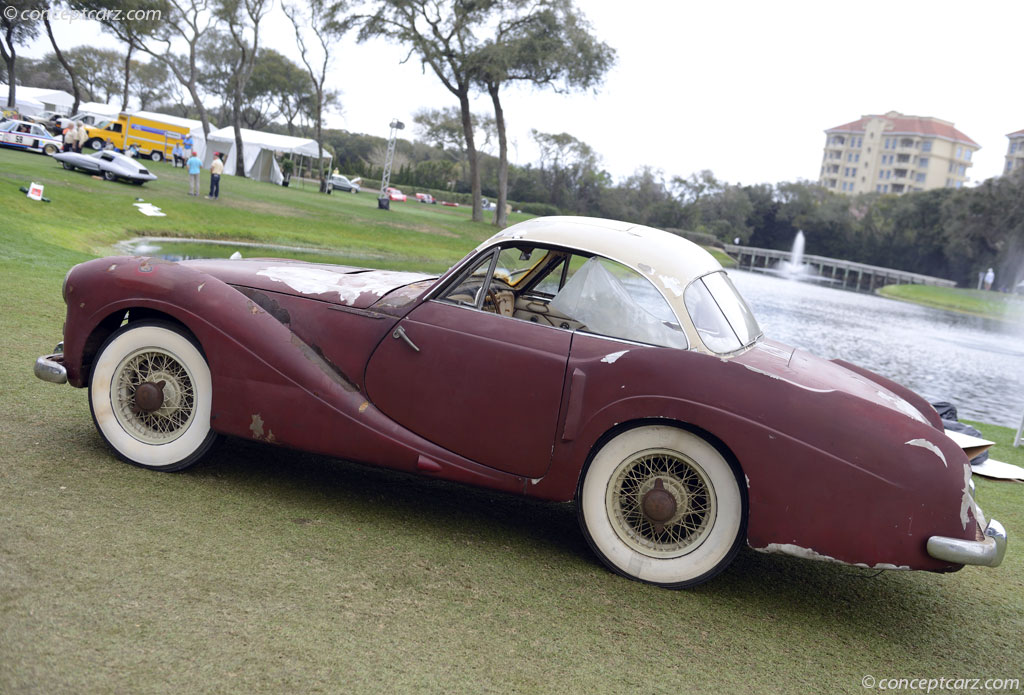
Berlinetta by Saoutchik
Chassis #: 117
View info and history
ENASA was incorporated in 1946 after acquiring the automotive assets of the Spanish Hispano-Suiza and the Italian Fiat in Spain. It belonged to INI (Instituto Nacional de Industria), a Spanish state-owned financing and industrial holding company established in Francoist Spain. Under the Pegaso marque (and for a short period of time - the Sava brands), they produced buses, trucks, and military armored vehicles.Wifredo Ricart
Wifredo Ricart was born in Barcelona, graduated in 1918 as an industrial engineer, and was first employed by a Hispano-Suiza dealer. Shortly thereafter, he worked for Motores Ricart-Perez, a company that produced industrial engines. Ricart designed his first automobile in 1922, equipped with a 1.5-liter, 16-valve, four-cylinder engine. Two of his cars competed in the Barcelona Grand Prix for voiturettes, one winning its second race.
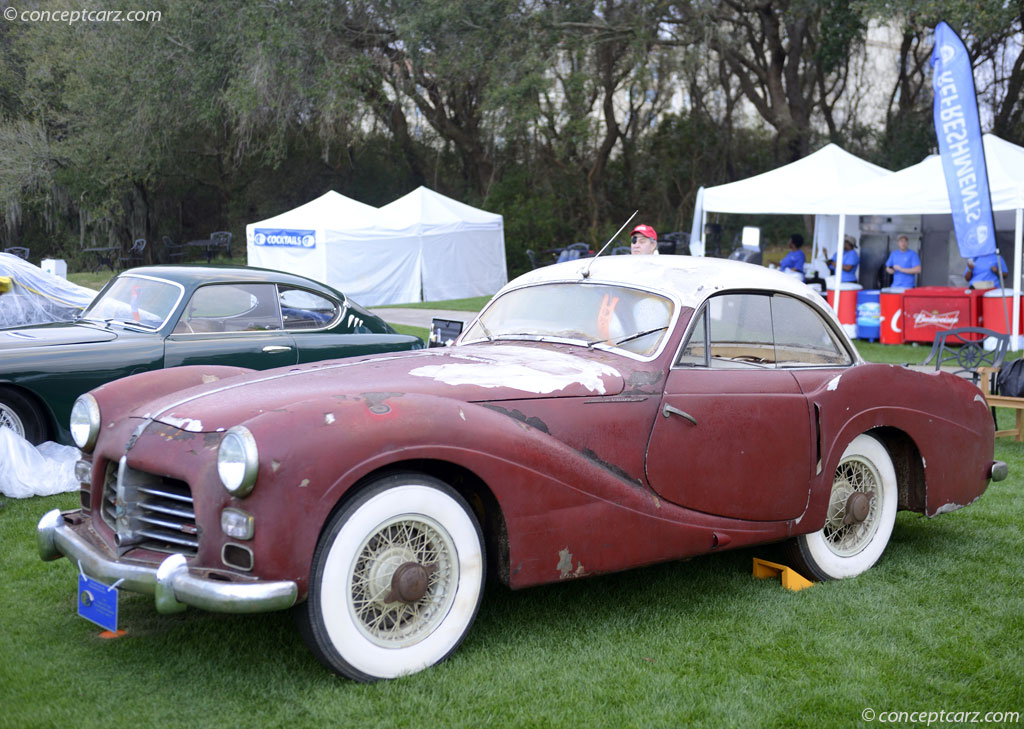
Berlinetta by Saoutchik
Chassis #: 117
View info and history
While state-owned ENASA had its primary business interest in bus and truck production, Ricart hoped to add automobile production to Pegaso's portfolio. Eventually, Pegaso would become one of the leading European industrial vehicle makers. By 1990, Pegaso had constructed over 350,000 vehicles, with its highest year of production being 1974, when it produced approximately 26,000 vehicles. Sports Cars
During the early 1950s, the newly formed Pegaso company would build a sophisticated, high-performance Gran Turismo that was - for a time - the world's fastest production car, capable of reaching 151 mph. Perfectly engineered, the initial reaction to the first Pegaso Z-102s was critical of its conservatively bodied coachwork by ENASA, so Ricart commissioned Carrozzeria Touring of Milan, Italy, for something more exciting. Successfully shedding the subdued persona, they would eventually create coachwork for many Z-102s (approximately 40 examples). Since the early steel-bodied Pegasos were deemed too heavy, Carrozzeria Touring was the logical coachbuilder to select since they were renowned for beautiful designs and patented superleggera construction methods. French coachbuilder Saoutchik, one of the most famous and avant-garde pre-war coachbuilders, would create eighteen bodies (2 fewer than the factory itself), three of which were convertibles. Of the eighty-four examples of the Z-102 produced through 1958, twenty-eight were cabriolets, and the rest were fixed roof coupes.
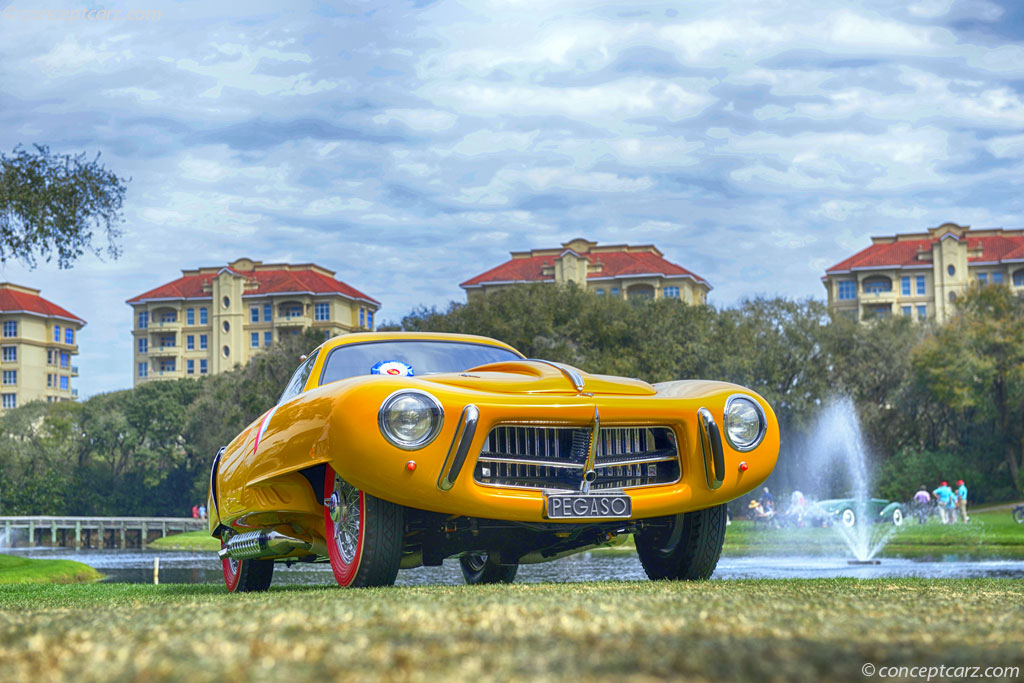
Cupula Cope
Chassis #: 150-0121
View info and history
Pegaso produced mainly rolling chassis and in the tradition of the grand pre-war classics, left the bodywork to be completed by Coachbuilders (albeit some were bodied in-house). The Pegaso Z-102 rested on a pressed steel chassis with a 92.1 inch wheelbase, and had a double wishbone independent front suspension, De Dion-type rear axle, and four-wheel drum brakes.

Cupula Cope
Chassis #: 150-0121
View info and history
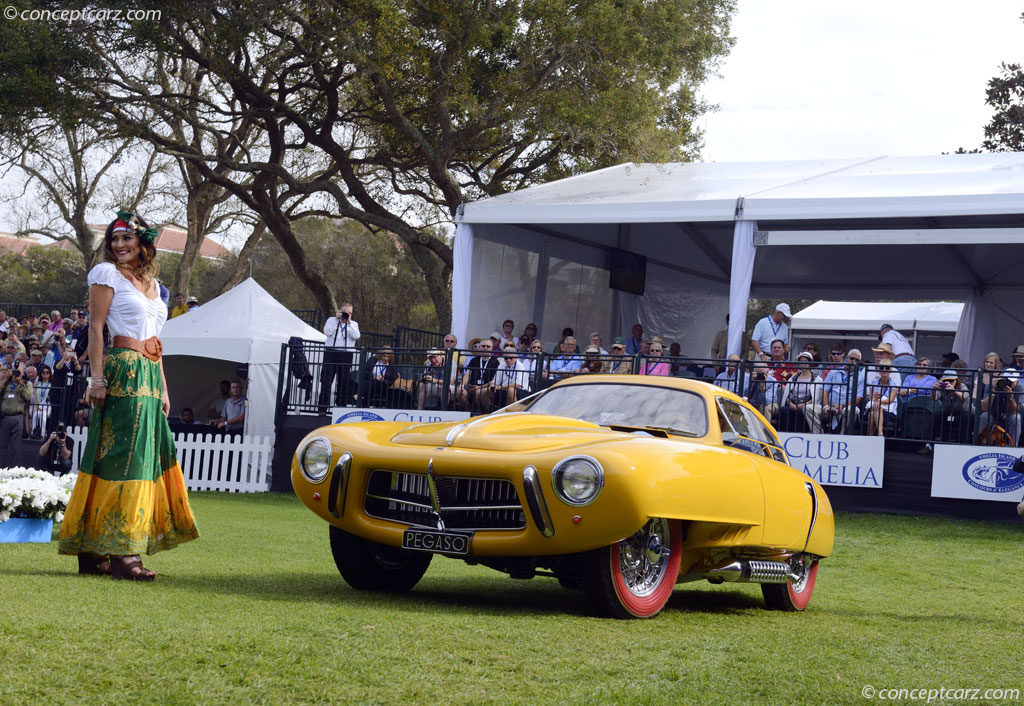
Cupula Cope
Chassis #: 150-0121
View info and history
The Z-102 prototypes and pre-production cars were designed and built entirely in-house, including the coachwork. The list of independent coachbuilders includes Saoutchik in Paris, Carrozzeria Touring in Milan, and Serra in Barcelona. Competition
In 1953, a supercharged Pegaso set a new production car speed record at Jabbeke in Belgium; works driver Celso Fernández achieved a speed of 241.602km/h (150mph) over the flying mile, beating the existing record held by a Jaguar XK120.
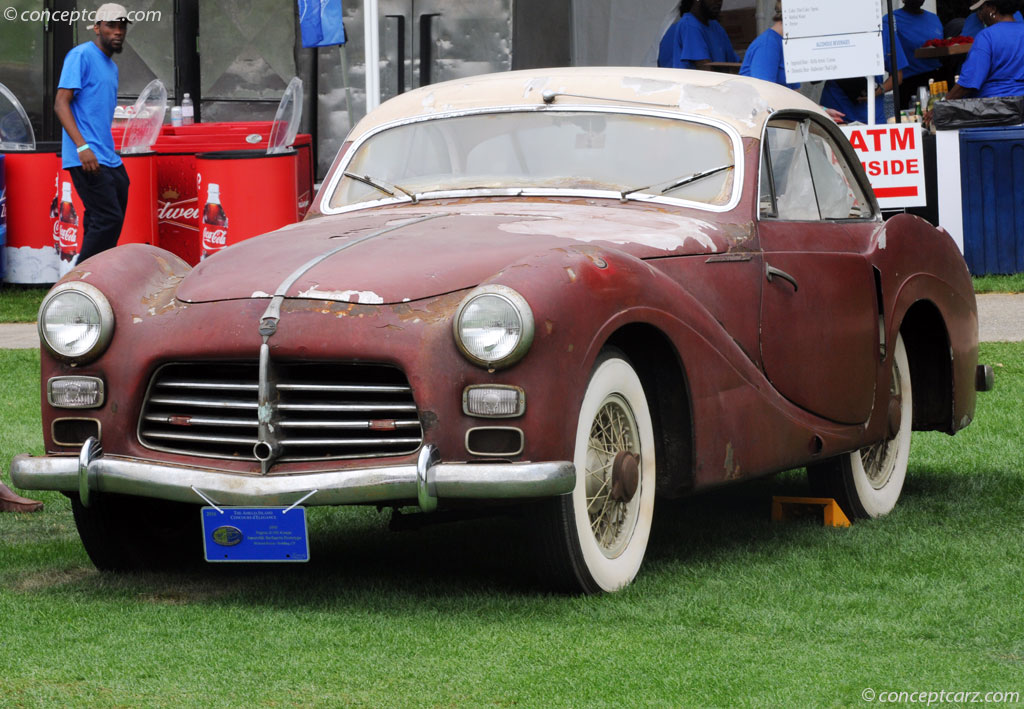
Berlinetta by Saoutchik
Chassis #: 117
View info and history
Pegaso produced eighty-four examples of the Z-102 chassis in all configurations, arguably among their era's finest creations. More than just rolling sculptures, they were sophisticated, complex, and aptly suited for motorsport competition, Concours d'Elegance competition, or high-speed motoring.
by Daniel Vaughan | Sep 2023
Related Reading : Pegaso Z102B History
Named after Pegasus, the winged horse of Greek mythology, the Pegaso Car Company produced very rare and exotic sports vehicles. Wilfredo Ricart was one of Enzo Ferraris colleagues at Alfo Romeos race department. He left Alfa Romeo after the war and teamed p with various engineers and technicians to begin working on their own vehicle. This eventually resulted in the Pegaso Z102. A very modern....
Continue Reading >>
Continue Reading >>
Similarly Sized Vehicles
from 1952
1952 Pegaso Z102 Vehicle Profiles
Recent Vehicle Additions
Performance and Specification Comparison
Z102B Specification Comparison by Year
Year
Production
Wheelbase
Engine
Prices
92.00 in.
8 cyl., 150.85 CID.
8 cyl., 150.85 CID., 165.00hp
8 cyl., 171.84 CID., 170.00hp
8 cyl., 193.93 CID., 200.00hp
8 cyl., 171.84 CID., 250.00hp
8 cyl., 193.93 CID., 275.00hp
8 cyl., 150.85 CID., 165.00hp
8 cyl., 171.84 CID., 170.00hp
8 cyl., 193.93 CID., 200.00hp
8 cyl., 171.84 CID., 250.00hp
8 cyl., 193.93 CID., 275.00hp
92.00 in.
8 cyl., 150.85 CID.
8 cyl., 150.85 CID., 165.00hp
8 cyl., 171.84 CID., 170.00hp
8 cyl., 193.93 CID., 200.00hp
8 cyl., 150.85 CID., 165.00hp
8 cyl., 171.84 CID., 170.00hp
8 cyl., 193.93 CID., 200.00hp
92.00 in.
8 cyl., 150.85 CID.
8 cyl., 171.84 CID., 170.00hp
8 cyl., 193.93 CID., 275.00hp
8 cyl., 171.84 CID., 170.00hp
8 cyl., 193.93 CID., 275.00hp
$18,050 - $18,050
Related Automotive News

'Hidden Treasure' Porsche Icon at Bonhams Amelia Island Auction
550 SPYDER WITH PERIOD RACE HISTORY OFFERED FOR FIRST TIME IN 50 YEARS
One of the most important Porsche models ever produced will headline Bonhams Amelia Island Sale on March 3 in Florida, being offered after 50 years of ownership and displayed...

Past Best of Show Winners at The Pebble Beach Concours d'Elegance
overview1
The 70th anniversary of the Pebble Beach Concours dElegance was celebrated with a spectacular display of previous Best of Show winners. Thirty-seven examples graced the showfield and many were still with the same owners who raised the trophy...

Alpine Exhibition At The International Automobile Festival In Paris
Alpine chooses the International Automobile Festival at Invalides (FAI) for an exhibition featuring historic, current and concept models.
The vehicles on display exhibit Alpines rich history.
A design exercise, the Alpine A110 SportsX, inspired b...

Donald Campbell's DB4 GT Speeds into Bonhams Goodwood Revival Sale
A rare 1961 Aston Martin DB4 GT, one of only 45 right-hand drive examples produced and first privately owned by Donald Campbell CBE, the world land and water speed record breaker, is to be offered at the Bonhams Goodwood Revival Sale on Saturday 14 September,...

Amelia Island Concours : Best in Show
The 21st Amelia Island Concours dElegance showcased over 250 vehicles which bravely ventured onto the show field under weather reports that threatened heavy downpours. In an effort to avoid the inevitable rain, the awards ceremony was truncated and...























